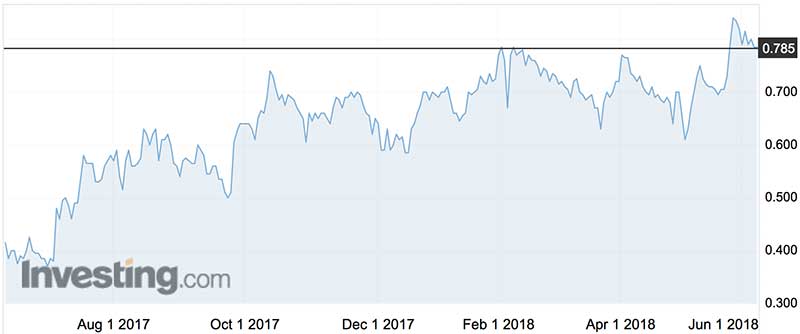Breast cancer screener Volpara seeks to lift sales on path to break-even

It is one of the sexiest sectors of the market, but as accounting software giant Xero found, even software as a service (or “SaaS”) businesses need to turn a profit sooner rather than later, otherwise investor interest quickly wanes.
Volpara (ASX:VHT) sells breast cancer screening software via the SaaS model, which it claims can more effectively indicate cancer in breasts with greater density, lifting the accuracy of diagnoses.
Women with higher levels of breast density show a greater propensity to having breast cancer.
Volpara has just unveiled more red ink, losing $NZ9 million in the year to March, which has pushed total losses so far to more than $NZ60 million.
Even so, investor appetite remains buoyant, for now.
It has just completed another $20 million share issue priced at 60c — which was well supported, with the shares now trading at around 80c, and headed higher according to some in the market.
That heavy loss was booked on revenue of just $NZ3.3 million for the year, although the company reckons revenue this financial year will reach $NZ9 million.
But an anticipated increase in costs will see the company continue to wrack up losses.
Driving much of that forecast rise in revenue will be a doubling of its sales force in the large US market.
Access to other markets, however, is slow.

In the UK, for example, the National Health Service has requested a two year ‘proof of concept’ study before it is willing to consider funding Volpara’s service in its hospitals in the UK.
Volpara has already completed a five-year trial there.
At the same time, there has been renewed debate in the UK over whether screening for breast cancer is actually worthwhile.
One group of doctors argued recently that screening programs cause more harm than good, due in part to the harm of mis-diagnosis to healthy women.
As that debate rages in the UK, it will not be until 2020 at the earliest that Volpara can expect access to this market.
“There is a potential of two million women in that market,” Ralph Highnam, Volpara’s chief executive, told Stockhead.
Access to other markets in mainland Europe remains piecemeal, depending heavily ongoing research programs in individual countries to garner support for Volpara’s software.
- Bookmark this link for small cap breaking news
- Discuss small cap news in our Facebook group
- Follow us on Facebook or Twitter
- Subscribe to our daily newsletter
Similarly, progress in north Asiais slow, with Volpara focused mostly on key influencer institutions in the various markets of Japan, South Korea and Taiwan, with an estimated ten centres using its software in Japan, six in Korea and three sites in Taiwan.
If Volpara’s revenues hit the forecast level of $NZ9 million this financial year, the focus will then shift to a further rise in revenue the year following, which ends in March, 2020, to a level sufficient to cover operating costs.
Volpara’s chief financial officer Craig Hadfield told Stockhead that costs this financial year will rise to around $NZ15-16 million, reflecting the build-out of the sales force in the US and other associated business expansion costs.
“Costs will then be held flat at this level,” he said. “So losses should decline from next year, with the rise in revenue to lead to lower losses.”
As a result, the recent $20 million fund raising should give the company a clear run way of up to two and a half years to achieve cash break-even, he said.
“The focus is on driving sales to close the cost gap,” Hadfield said.
UNLOCK INSIGHTS
Discover the untold stories of emerging ASX stocks.
Daily news and expert analysis, it's free to subscribe.
By proceeding, you confirm you understand that we handle personal information in accordance with our Privacy Policy.








